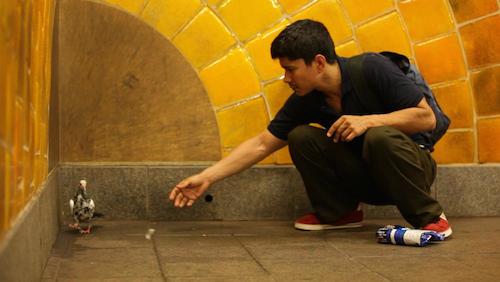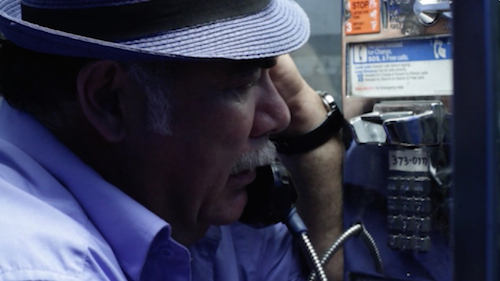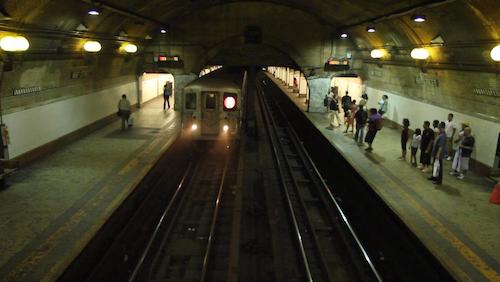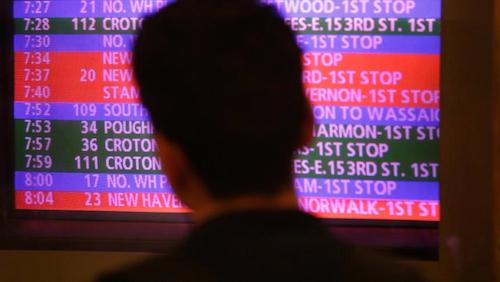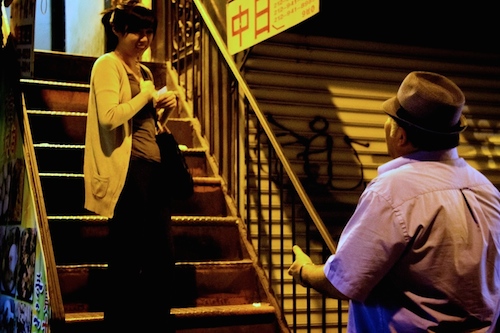H.O.M.E. Is Where the Heart Is
Winner of Best Narrative Feature at the Queens World Film Festival last month, H.O.M.E. is a poignant, beautifully shot film about the importance of human connection. Its director and co-writer, Daniel Maldonado, a lifelong New Yorker, shows us aspects of the city we don’t always see via two interconnected stories: One features Jeremy Ray Valdez as Danny, a young runaway with Asperger’s Syndrome who is living in the subways. The other thread concerns a struggling Ecuadorian cab driver, Gabriel (acclaimed Mexican actor Jesús Ochoa), who helps a distraught Chinese mother (Angela Lin) get home to Chinatown.
Maldonado’s first feature, H.O.M.E. has both a dreamlike, impressionistic quality and realistic characters and scenes, a testament to his unique artistic vision and desire to create something human and relatable. The New York subway system is also a major character in the film; through Danny’s eyes, it is a repository of complex beauty and sometimes overwhelming stimuli.
The film will be screened at 10:45 pm on Friday, April 15, at Cinema Village, as part of the Manhattan Film Festival. Last week I spoke with Maldonado about the making and the meaning of H.O.M.E.:
You studied film at the School of Visual Arts?
I kind of went about it in a roundabout way; instead of trying to get into a 4-year program, I went to night school, because I was pretty much supporting myself. After two years of night classes, I completely fell in love, so I switched into the degree program and wound up getting a Bachelor’s in film. As much as I loved making student films, what interested me the most was learning about film history and world cinema. That was the biggest spark, learning about films from all over the world, different generations; learning what art is, basically.
H.O.M.E. was co-written with Hector Carosso; had you ever worked with him before?
The first story about a young man with Asperger’s is something I wrote very loosely. I wanted it to be a loose narrative and incorporate a lot of documentary elements, but the second story was written with Hector and he was a little bit more formal in terms of the narrative. I had just met him through a friend and it was one of those lucky breaks where we hit it off and we had a continuous dialogue of ideas and fed off each other; that’s very rare.
The inspiration for the film was a story in the New York Times about a boy with Asperger’s who lived in the subway for 11 days.
I knew I wanted to do a story based in New York City and use the city as a character; it’s where I grew up. I was fascinated by that story in the Times… It stuck with me, and since then there have been several instances of children who are autistic going into the subways. I did a lot of research and I befriended a family with a boy with Asperger’s; they consulted in the writing and making of the film. It was very important to me to be responsible in portraying this character. I went as far as spending time living in the subways; I would go down for 18 hours at a time for a few weeks just to know what it feels like. I traveled to almost every single station in the four boroughs.
The film shows so much art in the subways, both intentional and accidental. Did you want to show the beauty of it?
One of things I noticed during that period is that we generally use the subways to go from A to B, so when you’re in that environment and you’re not going anywhere, your senses open up and that’s what allowed me to notice the cracks in the walls, the way the water was dripping from one of the pipes; it became very sensorial with me. It was also important to me to capture any way I could the POV of someone with Asperger’s.
How did you find Jeremy?
He already had a career in television and a couple of independent films, including one with Benjamin Bratt (La mission). I really loved his work and I thought he would be perfect. Luckily we knew somebody who knew him so we met with him. He immediately was interested because he had a family member who was autistic. Mind you, this is someone who’d never really spent time in New York—he’s from New Mexico, now living in LA—he’d never really ridden the subways, so I thought, this is going to be a challenge (laughs)…That scene where Danny has a bit of a freak out, Jeremy really had that moment right before we shot that scene. It was July, very hot, and it was a crowded subway car and he was really having that experience.
Then there’s Jesús Ochoa, who you also wanted specifically for the role of Gabriel.
A lot of it goes back to the casting agency Orpheus Group. These women cast Girlfight, Maria Full of Grace, some big independent films. They’re the ones responsible for getting Jesús. He did a film called Sangre de me sangre, which won (the Grand Jury prize) at Sundance. He’s an amazing presence.
Did you shoot a lot of the subway footage at night, or whenever you could get access?
Well, it’s technically illegal (laughs), so as many other independent filmmakers do in New York, you steal shots. The whole approach was that this would have to be planned out for us to execute it. We started off at night just because we wanted more control. Then we started getting stopped by the police … as long as you don’t have a big crew or a big tripod, you can get away with it a lot easier. They would still stop us but we had two cameras, so when they stopped one, the other kept rolling.
Danny’s character interacts with various people down there.
I wanted to have Jeremy engage with people while in character. We would give him an earphone and I was speaking to him, and as we filmed, he would interact with people. There’s a scene where he goes into a store in Grand Central and has a conversation with a lady at the counter; she wasn’t aware that we were filming. So we did a lot of experimentation where I wanted to blend fiction and reality, just to see what would come of it. A few people came up to us after they found out we were filming and said that they see a lot of autistic young people in the subway, it was almost common for them.
Those scenes in Gabriel’s cab: he’s really driving around the city, isn’t he?
Yeah, he’d never driven in New York before.
So you had a guy who’d never ridden the subway and a guy who’d never driven here!
Jesús is so amazing, what he was able to give us, all the sacrifices. I said, we don’t really have a whole lot of money to get all the equipment needed for a proper way to film this, so are you OK with driving and performing? He said, yeah, no problem. So we put the cameras in the car and we were all cramped in there; we had another car in front. I think the most challenging part was trying to stop traffic on the Manhattan Bridge (laughs). That was a really tough moment.
The immigrant experience, which we don’t always see portrayed on film, is obviously important to you.
I’ve been on that trail for a little bit now; I did a short film in 2009 about a Mexican delivery worker (Lalo), slapstick comedy. In New York City there are a million stories to tell and a million stories have been told, but I’ve always been interested in the immigrant experience because they are the fabric of the city. And the way I see my career going in terms of my interests and inspirations, I’ll continue to make films with immigrant characters.
What do you most want viewers to take away from H.O.M.E.?
When I started to write the story I was very bothered—and still am very bothered–by acts that we hear about, where people are oblivious to situations. It was reported a couple of years ago that a man bled to death on a sidewalk; there was surveillance footage of people throughout the night, passing by, looking at him and not helping. Stuff like that really gets to me and pushed me forward to make this film, write the stories, and ultimately not get on a soapbox and preach about paying attention and being aware, but just tell a simple, quiet little story and hope that people can draw from it the importance of connecting with others.
What are you working on next?
It’s bigger in scope; I’ll just say that it’s a film that I want to do in Puerto Rico and it involves a community that is affected by a tragedy. It’s loosely based on actual events and it goes into mysticism, myth, folklore; there’s lots going on.
—Marina Zogbi

